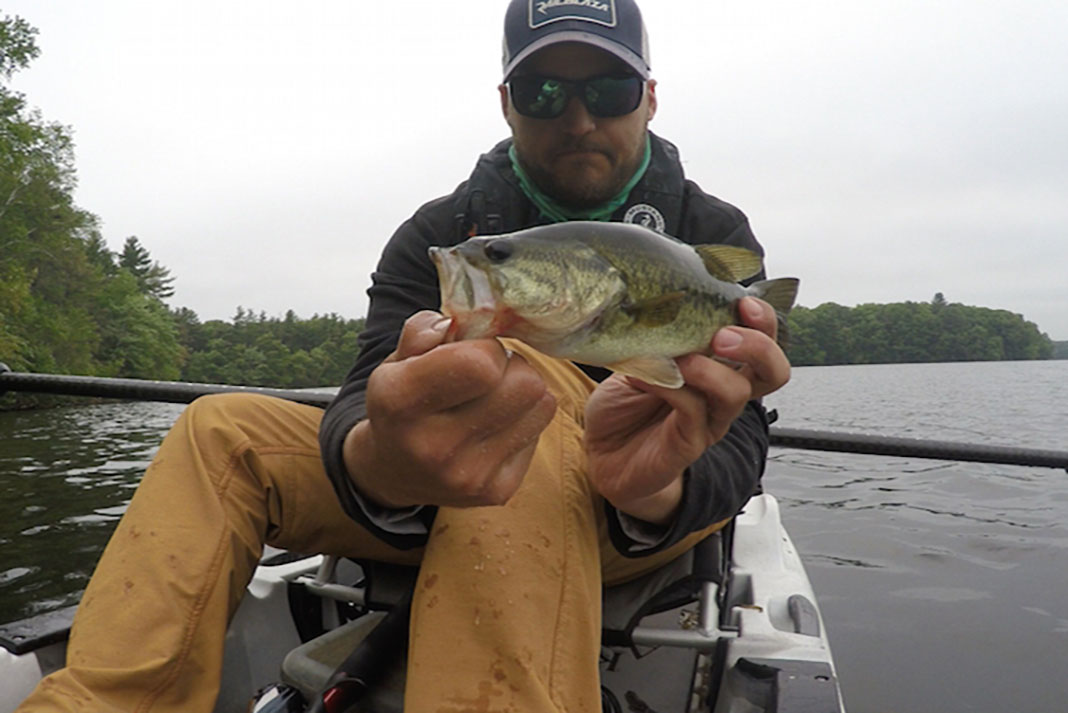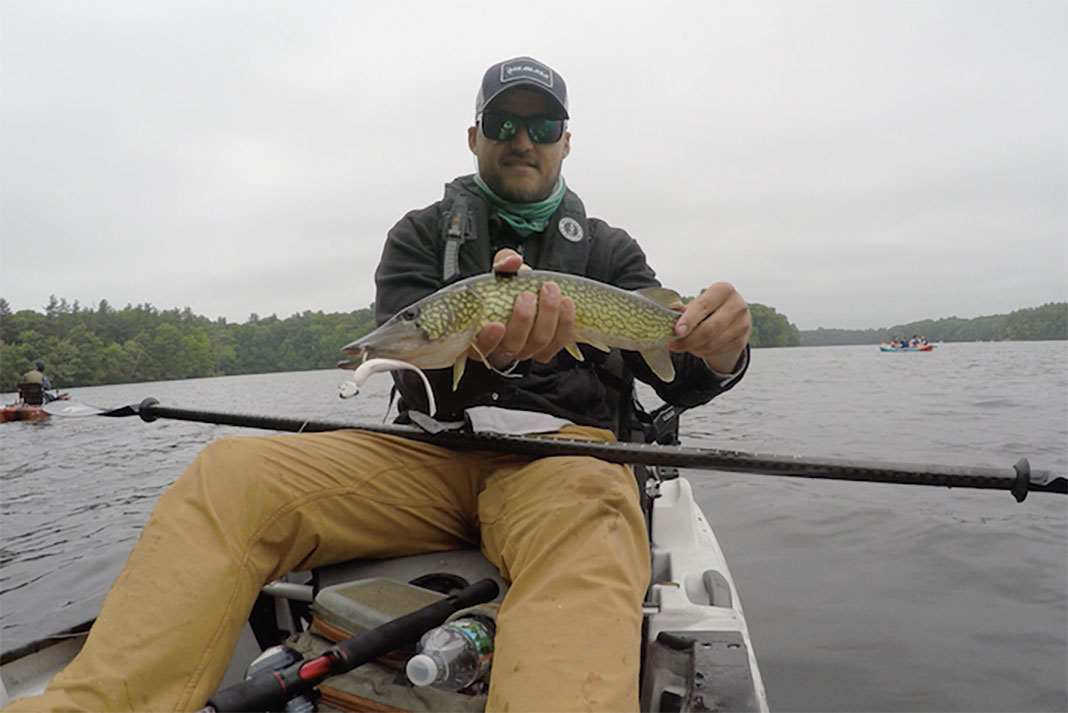When you first start fishing it all seems very random. Everything from lure selection to where you place your casts, it all looks the same in the beginning. But with sharp senses and the right insights you too can develop a feel for when, where and how the bass are biting. Zero in on a productive bass pattern by following these three expert tips.
3 Tips to Develop a Pattern for Bass
What’s the difference between that log there and those two logs there? Why cast in one sport rather than five feet to the left? Why cast a white swimbait instead of a white crankbait? What’s the difference?
The truth is, as the great writer John Gierarch has said, “if you fish the same lure (he says fly) long enough it’ll eventually be the right one.” That’s great if you have the patience of a saint, but picking the right fly at the right time will lead to more—and faster—success. Since hours on the water can be so hard to come by, why not really make them count?

1 Be the Weather, Man
Listening to the conditions is the first step in deciding what to tie on first. Beyond whether it’s raining or not, I’m talking about everything from cloud cover and precipitation to wind, air temperature, water temperature, barometric pressure and season.
There are still a few further factors to consider, and probably many more than an angler could take into account, but the above list is a good start. If you don’t want to go with the full clipboard of details, at the very least you should think of two measurements and start from there: light (cloud coverage) and temperature (air and water).
As a general rule, the brighter it is the more muted your lure should be. Bluebird skies? Throw something white or natural-colored, like tans or muted greens. In dark and cloudy conditions it’s harder for the fish to spot their forage, so turn up the color and throw something more aggressive. Same goes for water clarity—murky water makes it harder for fish to see the lure, so choose something brighter.
When it comes to action, generally the colder it gets the slower you should fish. In warmer weather, feel free to turn up the speed a little more.

2 Listen to the Fish
The most important step to figure out a pattern isn’t necessarily what you tie on first. Instead, watch the way the fish react to that first lure. Don’t spend all day throwing the same spinnerbait, assuming you’ll eventually hook up because you’re slow rolling it on a cloudy day. You may very well succeed in the end, but you could also spend the day fishless.
Pay very close attention to what happens when you cast to the spots you assume should be holding fish. If the spot looks fishy, but you haven’t had a hit in 15 minutes, it might already be time to change. If you aren’t getting any hits on topwater, move to the center of the water column. Mix it up and start moving around the fishery to find where the fish are holding. Still nothing? Work the bottom with a finesse bait or jig, and go slower.
Don’t switch colors, switch styles. While color is important, you can usually stick with two main color schemes (aggressive and natural) and focus on lure styles to figure out the pattern. Once you know which type of lure is working, fine-tune your presentation with different colors in that same style.

3 Don’t Be Afraid of Change
The hardest part about finding the pattern is that it’s not always for the whole day. Sure, you may be able to catch fish all day long on the same bait, but sometimes you’ll notice the bite tapering off a bit. Instead of settling for catching a fish every few casts, now is your chance to start experimenting with presentations again. Repeat the same principles in the section above until you notice the fish starting to react. That consistency is the key to making sure you have the pattern down pat.
Some days really make you think you know what you’re doing. Good thing those days are rare. I was fishing on a freshwater flat recently for smallmouth bass when I tied on a shad-colored jerkbait on a cold, bright day. I started nailing them on every single cast.
After about 45 minutes the bite just shut off, and even though I was still catching fish every ten casts I had to make a change. I kept the same color scheme, but changed the action slighter to give the fish a smaller profile. I tied on a shad-colored crankbait, fishing it a little bit slower along the flat, and began catching fish right away.
Had I not hooked up with the crankbait, I would have switched to something totally different—like a jig or a soft plastic—and also changed the color. Being ready to try something different, even if you’re catching a fish here and there, will give you the versatility as an angler to consistently hook up all day long.
Catching bass and any other species comes down to identifying the pattern and adjusting your technique to match. | Feature photo: Ben Duchesney







On really bright days I’ve actually had a bit of luck throwing clear swimbaits – experimenting with the color of the jighead, from white to green-pumpkin to red even.